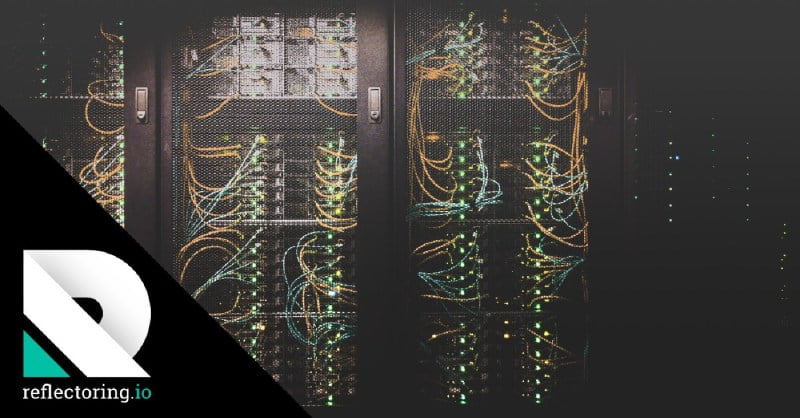Amazon Ex2

Amazon Ex2 – Architecture Cloud Operations and Game Market Migration News Partner Networks Smart Business Big Data Business Product Cloud Enterprise Strategy Cloud Financial Management Computing Contact Center Containers Databases Desktop and Mobile Applications Developer Tools DevOps Front End Web and Mobile HPC.
Industrial Integration and Automation IoT Machine Learning Environment Messaging and Targeting Microsoft Workload for .NET in Networking and Content Delivery Open Source Public Sector Quantum Computing Robotics SAP Secure Spatial Computing Startup Storage Supply Chain and Logistics Training and Certification.
Amazon Ex2

UPDATE 13/4/20—Amazon Elastic Compute Cloud (EC2) Trn1n instances powered by Trainium are now available. Amazon EC2 Trn1n instances double the network bandwidth (vs. Trn1 instances) with a 1600 Gbps Elastic Fabric Adapter (EFA) for network-intensive productive artificial intelligence (AI) such as large language models (LLMs) It provides even higher performance for training models. . and Mixed Specialization (MoE).
Measuring Performance Across Amazon Ec2 Instances
The size and complexity of deep learning (DL) models have increased over the past few years, increasing training times from days to weeks. Training a language structure as large as GPT-3 can take months, increasing the training cost significantly. Innovations have been made in chips, servers, and data center connectivity to reduce model training time and enable machine learning (ML) practitioners to communicate faster.
At re:Invent 2021, we announced the possibility of an Amazon EC2 Trn1 chassis powered by Trainium chips. Trainium is optimized for advanced deep learning and is the second generation ML chip after Inferentia.
Today we are excited to announce the availability of Amazon EC2 Trn1 instances! This is the case when complex DL models are used for natural language processing, image recognition, etc. It is well suited for large-scale distributed training in a wide variety of applications, such as
Compared to Amazon EC2 P4d instances, Trn1 instances achieve 1.4x BF16 datatype, 2.5x TF32 datatype, 5x FP32 datatype, 4x network bandwidth between nodes, and up to 50% lower cost . train fare. Trn1 events can be installed on the EC2 UltraCluster, which acts as a supercomputer with the power to quickly train deep learning models. We will share more details about EC2 UltraClusters later in this blog post.
Amazon’s Cloud Crisis: How Aws Will Lose The Future Of Computing
New Trn1 Instance Highlights Trn1 instances are currently available in two sizes and are powered by up to 16 Trainium chips with 128 vCPUs. It provides high-performance networking and storage to enable efficient data and model parallelism, a popular strategy for distributed education.
Trn1 instances provide up to 512GB of high-bandwidth memory, deliver TF32/FP16/BF16 computing performance of up to 3.4 petaflops, and feature ultra-fast NeuronLink connectivity between chips. NeuronLink removes communication barriers when scaling workloads across multiple Trainium chips.
Trn1 instances are also the first EC2 instances to support up to 800 Gbps Elastic Fabric Adapter (EFA) network bandwidth for highly efficient networking. This second generation EFA offers lower latency and up to twice the network bandwidth of the previous generation. Trn1 enclosures also come with up to 8TB of NVMe SSD storage for super-fast access to large data sets.

Trn1 EC2 UltraClusters For large-scale education, Trn1 instances are integrated with Amazon FSx for Luster high-performance storage and built on EC2 UltraClusters. The EC2 UltraCluster is a hyperscale cluster connected to a non-blocking petabit scale network. This provides on-demand access to supercomputers, reducing model training time for large and complex models from months to weeks or even days.
Amazon Ec2 Spot
Trainium Innovations Trainium chips feature true scalar, vector and tensor engines built specifically for deep learning algorithms. This provides higher performance by making more use of the chip compared to other architectures.
Trainium shares the same Neuron SDK as Inferentia, so anyone who already uses Inferentia can easily start using Trainium.
The Neuron SDK for training mode includes a compiler, an extension, a runtime library, and development tools. The Neuron plugin integrates natively with popular machine learning frameworks such as PyTorch and TensorFlow.
In addition to advance (AOT) compilation, Neuron SDK supports just-in-time (JIT) compilation to speed up model compilation and the need to change the execution process step by step.
What Is Amazon Aws Ec2?
Compiling and running the model in Trainium requires only a few code changes to the training script. You don’t need to change your model or think about data type changes.
Running a Trn1 Example This example uses the existing PyTorch Neuron package to train a PyTorch model on an EC2 Trn1 instance. PyTorch Neuron is based on the PyTorch XLA software package and can convert PyTorch functions to Trainium commands.
Each Trainium chip contains two NeuronCore accelerators, which are the main neural network computing units. You can train PyTorch models in Trainium NeuronCores with minor changes to your training code.

Connect to the Trn1 instance via SSH and use the Python virtual environment with the PyTorch Neuron package. If you are using the AMI provided by Neuron, you can configure the preloaded environment by running the following command:
Aws Creating An Ec2 Instance
A few configurations are required before running the training script. In the case of Trn1, the XLA construct must be mapped to NeuronCore.
When the model is imported into the XLA tool (NeuronCore), the following operations on the model are saved for later processing. This is slow execution of XLA as opposed to fast execution of PyTorch. Within the training cycle, you must display the graph to be rendered and run it using it on the XLA device.
When running the training script, you can set the number of NeuronCores to be used for training with:
For example, to run a multitasking data parallel training model across all 32 NeuronCores in a trn1.32xlarge instance, run:
Introduction To Amazon Ec2 Systems Manager
Data parallelism is a training distribution technique in which data can be copied to multiple employees, with each employee processing a portion of the training data. Employees then share the results with each other.
See the Neuron SDK documentation for information on supported machine learning programs, model types, and how to create training materials for large-scale training deployed on trn1.32xlarge instances.
Profiling Tools Let’s take a quick look at useful tools for monitoring and profiling machine learning experiments Trn1 is an example of using resources. Neuron integrates with TensorBoard to monitor and visualize model training metrics.

Commands specifying the number of Neuron devices in the system, as well as the number of associated NeuronCores, memory, connection/topology, PCI device information, and the Python process currently taking ownership of NeuronCore:
Launch Amazon Ec2 Dl1 Instance :: Getting Started With Amazon Sagemaker Studio
Use the command to see a high-level view of the Neuron environment. It shows key system statistics on usage of each NeuronCore, all models installed on one or more NeuronCore, IDs of all processes using Neuron runtime, and vCPU and memory usage.
You can now open Trn1 instances as On-Demand, Reserved, and Spot Instances in the US East (N. Virginia) and US West (Oregon) Regions, or as part of a Backup Plan. As always with Amazon EC2, you only pay for what you use. For more information. Amazon EC2 Pricing.
Trn1 instances can be deployed using the Deep Learning AMI and container images are available through managed services such as Amazon SageMaker, Amazon Elastic Kubernetes Service (Amazon EKS), Amazon Elastic Container Service (Amazon ECS), and ParallelCluster.
To learn more, please visit the Amazon EC2 Trn1 page and send us your feedback via EC2 Post or general support contacts. Amazon EC2 Spot Instances allow you to use unused EC2 capacity in the cloud. Spot Instances are available at up to 90% off compared to On-Demand prices. You can use Spot Instances for a variety of ad-hoc, scalable, or flexible applications such as big data, service appliances, CI/CD, web servers, HPC, and test and development tasks. Spot Instances are tightly integrated with services such as AutoScaling, EMR, ECS, CloudFormation, Data Pipeline, and Batch, so you can choose how you start and maintain applications running on Spot Instances.
Managed Kubernetes Service
You can easily combine Spot Instances with On-Demand, RI, and Savings Plans instances to further optimize service costs and performance. Due to the scale of their operations, Spot Instances can provide scalability and cost savings to run large workloads. It can also hibernate, suspend, or stop Spot Instances when EC2 restarts capacity with two-minute notification. You can easily find this unused line of computers for up to 90% off only.
You can purchase Spot Instances for 90% less than On-Demand Instances. You can also use EC2 Autoscaling to allocate capacity from Spot, On-Demand, RI and Savings Plans activities to optimize service costs and performance.
Point shot. You can run hyperscale workloads with greater cost savings or scale your workloads by running parallel workloads.

EC2 Autoscaling and









No Comments